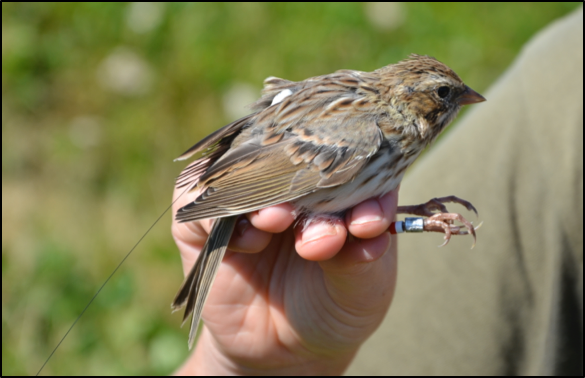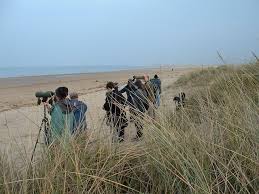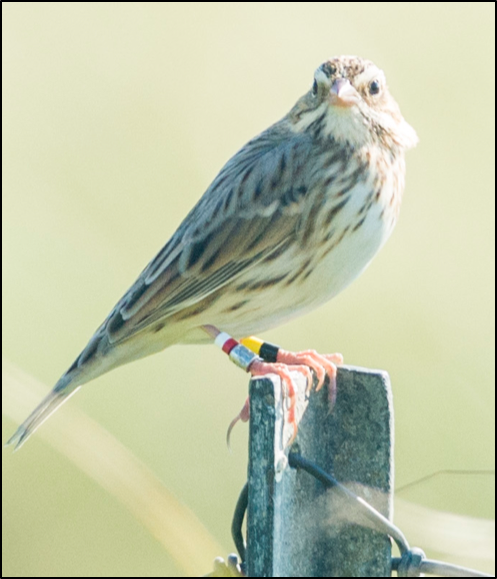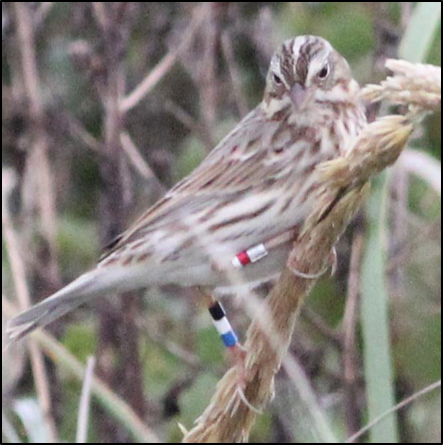Tags and bands
VHF tags are great -- lightweight, so they don't bother the birds, and automatic. However, as you can see from this photo (the tag is the white thing on the bird's back, with the antenna trailing down and leftward), they're delicate. Plus their signal's blocked when the bird's on the ground, so they only tell us if the bird happens to be flying by a receiving station.
But there's another, cheaper, and even less intrusive way to track the birds.


Citizen Science
Armies of birders scan the Atlantic coastal dunes every winter, especially on Christmas Bird Counts. And one of their prized targets is the Ipswich sparrow, since it's such a cool denizen of the windy dunes.
It's thanks to birders like these that we know of the ups and downs of the sparrow's population (and that we've got hints, also now shown in other Savannah Sparrow populations, of their climatic drivers). Now we're hoping that these birders can also serve, in effect, as receiving stations to track the birds.
Colour bands code for location, year, age
We've banded over 200 individual birds on Sable Island with distinct colour combinations. On the right leg is a two-colour (aka "split") band that'll be the same for every year (for 2017, it's white over red). On the left leg are three colour bands, with a different combination for each individual. Birds banded as adults have a dark band on top; birds banded as juveniles have a light band on top.
We banded all these birds at just a few places on Sable Island, but from fall through spring they'll be scattered up and down the East Coast. Thanks to this region's high concentration of birders, we're confident many of our birds will be resighted.


A promising start!
It was only a couple weeks before we had our first re-sightings from the mainland. It just happened to be by the President of the Nova Scotia Bird Society, Dave Currie, who got lovely photos of the birds just outside Halifax. The second bird (shown here) showed all its colours; the first bird showed only its left leg, but that was enough to know who the bird was.